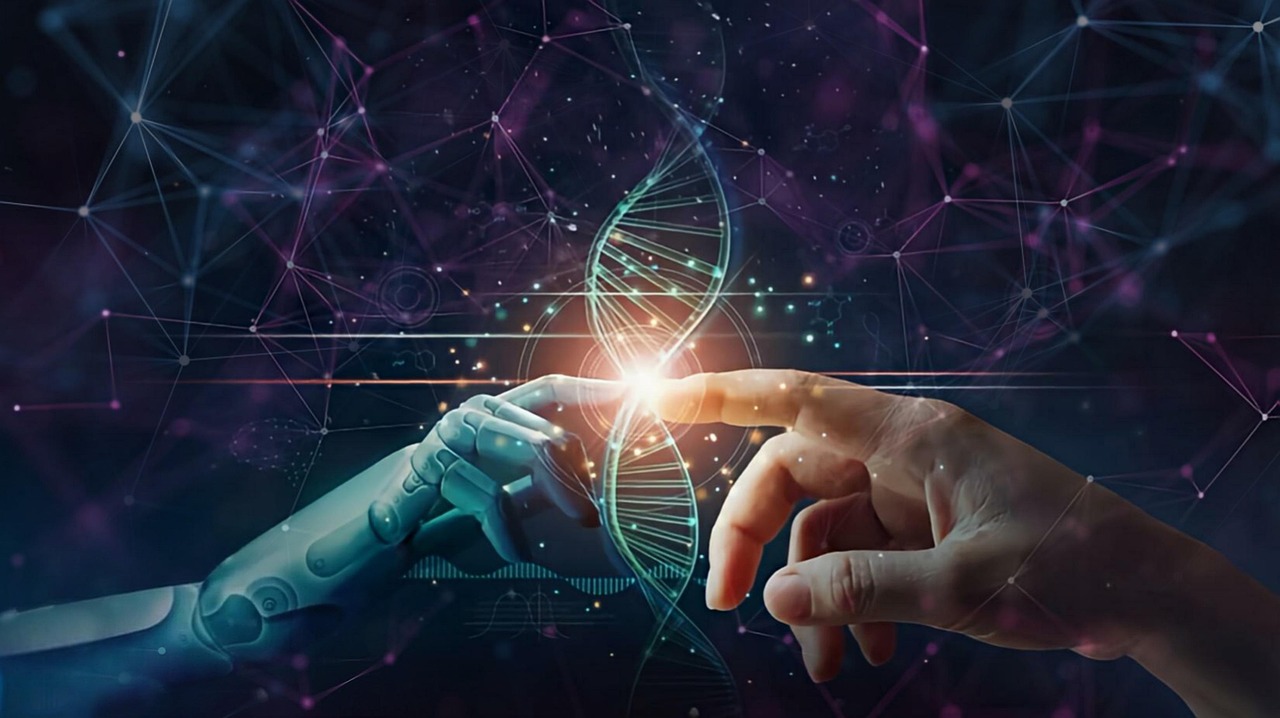Discover how digital twins are revolutionizing operations management and forecasting in 2025 through accurate simulations.
In 2025, Digital Twin Technology has emerged as the new frontier of business digital transformation.
Major companies are leveraging these virtual replicas to create real-time simulations of their processes and assets, revolutionizing the way they optimize smart operations and make precise business forecasts.
In fact, consulting firm Gartner included digital twins among the top 10 key technologies driving digital transformation towards Industry 4.0.
According to McKinsey, nearly 70% of technology leaders at large enterprises are already actively investing in digital twin initiatives.
But what exactly are digital twins, how do they work, and how are they being applied? We answer these questions below.
What is a Digital Twin and How Does It Work?
A digital twin is a highly accurate virtual representation of a physical object, process, or system, continuously synchronized with its real-world counterpart through real-time data.
In other words, it’s like having a digital "clone" of a real-world asset—such as a machine, factory, or store—on which we can run experiments.
Unlike traditional static simulations, digital twins are live-connected: they receive updated information from IoT sensors, databases, and other sources, using artificial intelligence and advanced analytics to mirror the current state of the physical asset.
This enables the simulation of multiple scenarios and answers the critical "what if?" questions within a risk-free virtual environment, providing valuable insights for the business.
In fact, the use of Digital Twins in business is one of the most common and recurrent applications of this branch of artificial intelligence, particularly in sectors like logistics and manufacturing.
Success Story
Discover how a manufacturing company managed to reduce its downtime by 8 hours per week.
How Does a Digital Twin Work?
In simple terms, a digital twin consists of three components: the real-world physical object, its virtual digital model, and the data connection between the two.
Key Steps to Create and Effectively Use a Digital Twin:
-
Real-World Data Collection: Sensors and IoT devices are installed on the physical asset or process to capture real-time operational data (such as temperatures, speeds, consumption rates, positions, etc.). Additionally, historical and contextual data (e.g., maintenance records or past sales data) are incorporated to enrich the model.
-
Creation of the Virtual Model: Using simulation software and advanced mathematical models—supported by artificial intelligence and machine learning—a digital replica of the system is built. This virtual model mimics the behavior of the real object and is continuously updated with new incoming data.
-
Real-Time Integration and Synchronization: Captured data flows continuously into the digital twin, allowing it to update in real time and reflect any changes or anomalies in the physical environment. Simultaneously, the digital twin can send information back, creating a feedback loop that helps adjust parameters in real-world operations if necessary.
-
Scenario Simulation and Analysis: Once synchronized, the digital twin enables safe testing of hypothetical scenarios. Teams can experiment by making adjustments to the model—such as changing a production line setup or store layout—and immediately observe how those changes would impact outcomes. This helps predict events (such as failures, bottlenecks, or demand fluctuations) and generates insights to optimize decision-making processes.
Thanks to this dynamic functioning, digital twins offer a real-time platform for business simulation, representing a major step forward in predictive maintenance.
For instance, if a machine component begins to show abnormal temperature readings, the digital twin can alert teams to a potential future failure and suggest adjustments or replacements before a breakdown occurs. All this happens without interrupting real-world operations, as the testing is conducted safely within the virtual model.
Ultimately, a digital twin acts as a virtual laboratory for the company, enabling continuous monitoring, analysis, and operational optimization.
Key Insight: The availability of massive data and advanced technology has boosted the adoption of digital twins.
The global market for digital twins is projected to grow from around €16.5 billion in 2024 to more than €240 billion by 2032, implying a staggering annual growth rate of almost 40%. This reflects how more and more industries are incorporating this tool into their core operations.
Practical Applications in the Industry and Retail Sectors
Digital twins are already transforming multiple industries. Here, we will explore how they are being applied in the industrial (manufacturing and production) and retail (commerce) sectors, with a focus on two high-impact areas:
- Operational optimization
- Predictive monitoring and maintenance
These practical applications demonstrate the tangible value of real-time simulations for improving efficiency and enhancing decision-making in business environments..
1. Benefits for Operational Optimization
Implementing digital twins delivers significant benefits for optimizing operations across factories, supply chains, and retail stores.
By creating a virtual replica of entire processes, companies can identify bottlenecks, test improvements, and continuously refine their smart operations.
Some examples:
Manufacturing Process Optimization
Many leading industrial companies are already using digital twins to enhance their production lines.
- Renault developed complete virtual prototypes of vehicles to simulate everything from design to manufacturing. Their engineers can test design adjustments, assembly line changes, and even simulate road tests in a virtual environment. This approach allowed them to identify improvements before building physical prototypes, accelerating product development and optimizing production.
- In another example, Electrolux (a home appliance manufacturer) created digital twins of its factories to simulate material flows on the production floor and identify the most efficient configurations. In pilot projects, they achieved savings of $2 million by eliminating inefficiencies and optimizing production capacity.
These cases clearly show that by simulating operations in real time, digital twins help reduce costs and lead times in manufacturing. On average, companies leveraging digital twins report a 15% improvement in operational efficiency and response times, resulting in faster, more competitive production processes.
Simulation of Supply Chains and Logistics
In both the industrial and retail sectors, supply chain management is critical. A digital twin enables companies to model the entire journey of materials or products from the factory to the customer.
- A notable example was the use of a digital twin by the U.S. military’s logistics command, US Transcom, to optimize global military transport: by simulating different routes and shipping patterns, they eliminated $2 billion in logistics costs by identifying more efficient routes.
- In the commercial sector, the French retail chain Intermarché created a digital twin of one of its stores to simulate aisle layouts and inventory flow. Using IoT data from shelves and real-time sales, they were able to test new product arrangements and stock adjustments without affecting the real store, identifying configurations that improved the shopping experience and reduced stockouts.
- Similarly, major retailers are increasingly using digital twins to optimize delivery routes, manage inventory dynamically, and fine-tune their omnichannel strategies.
According to a recent report, the application of digital twins in retail is expected to reach $10 billion by 2030, highlighting their growing role in boosting operational efficiency in the sector.
With a digital twin, a retailer can simulate demand spikes, plan last-mile logistics, and even design the layout of a smart store—all before implementing changes in the real world.
A study by ResearchAndMarkets indicates that more than 59% of companies plan to integrate digital twins into their operations by 2028, aiming precisely for these optimization and operational resilience benefits.
In summary, in both industrial and retail operations, digital twins act as a “virtual operations manager.” They allow businesses to experiment with operational improvements within a digital test environment, enabling smarter operations.
Companies can reduce costs, accelerate processes, and adapt quickly to market changes thanks to these real-time simulations.
2. Monitoring and Predictive Maintenance
Another powerful application of digital twins is the continuous monitoring and predictive maintenance of assets.
Thanks to real-time synchronization, the digital twin continuously monitors the "health" of machines, equipment, and infrastructure, anticipating failures before they occur and helping to avoid costly unplanned downtime.
For industrial sectors with critical machinery—and also for retailers managing equipment such as refrigeration, HVAC systems, or delivery vehicles—this represents a revolutionary shift in maintenance management.
Let's explore its advantadges:
Early Anomaly Detection
A digital twin constantly compares real-world operational data against ideal parameters in its virtual model. If it detects any deviation—such as abnormal vibration, overheating, or unusual slowdowns—it triggers early alerts. This enables technicians to intervene before minor issues escalate into major failures.
- For example, manufacturers like General Electric use digital twins of aircraft engines to monitor the performance of each component in real time. This allows them to identify worn parts or misalignments and schedule maintenance on the ground before a failure occurs mid-flight.
This predictive capability significantly enhances reliability: studies show that digital twins increase the effectiveness of predictive maintenance by approximately 35%, enabling more precise and timely interventions.
In practice, this can mean avoiding up to 50% of unexpected plant shutdowns and extending the useful life of equipment by adjusting maintenance based on actual usage rather than following a fixed calendar.
Proactive and Optimized Maintenance
Through simulations, it is possible to virtually test different maintenance strategies.
For instance, an energy company can use a digital twin of its turbines to simulate what would happen if inspection intervals were extended or if a component were replaced preventively rather than reactively.
The resulting decision is based on real data and analysis, ensuring minimal risk.
Many organizations report that, thanks to digital twins, they have been able to reduce maintenance costs by around 20–30% by avoiding unnecessary interventions and preventing major failures.
In the retail and consumer goods sector, consider the refrigeration systems in a supermarket: a digital twin of the HVAC system can continuously monitor compressors and fans, detect wear, and adjust parameters remotely. This way, a cooling system failure—which could spoil inventory—is prevented through timely, planned repairs.
Moreover, the digital twin maintains a historical data record for each asset, generating an intelligent log that simplifies performance audits and enhances future predictions (for example, accurately estimating when a piece of equipment will reach the end of its useful life).
Ultimately, real-time monitoring combined with digital twin analytics elevates industrial maintenance to a predictive and proactive level. This minimizes downtime, enhances safety (by preventing catastrophic failures), and delivers substantial cost savings.
It’s no coincidence that predictive maintenance powered by digital twins is considered a cornerstone of smart operations.
According to IoT Analytics, 57% of organizations state that sustainability (such as reducing waste and extending asset life) is a key driver behind their investments in digital twins.
Keeping equipment operating at peak efficiency not only reduces expenses but also contributes to corporate environmental responsibility goals—an increasingly important factor in business strategy today.
Conclusions: Toward Smarter Decision-Making
The digital twin revolution is already underway and promises to redefine how companies make decisions and manage their operations.
Thanks to real-time business simulations, executives and decision-makers can rely on tested models and accurate data to plan for the future with greater certainty.
A digital twin offers predictive insight: it allows businesses to test strategies—such as launching a new product, redesigning a supply chain, or reorganizing a store layout—in a safe virtual environment, anticipating results before committing real-world resources. This approach reduces risks and increases competitive agility.
By 2025, integrating digital twins is no longer just a technological advantage—it is a smart business strategy.
Companies across manufacturing, energy, logistics, healthcare, and retail sectors are demonstrating that those who embrace digital twins can respond more swiftly to market changes, optimize every aspect of their operations, and predict challenges and opportunities with greater accuracy.
The result is a decision-making process grounded in evidence and simulation, driving innovation and efficiency in equal measure.
In short, digital twins are revolutionizing business management by bridging the physical and digital worlds.
For business professionals, understanding and leveraging this technology can be the key difference between being anchored in uncertainty or leading with smart operations and informed decisions.
The new frontier of business simulation is here: digital twins provide a real-time virtual map for navigating the present and future of business, reducing uncertainty and boosting success in the era of Industry 4.0.
Before you go...





